When it comes to flowering bonsai, nothing is more striking, colorful, and unique than a hibiscus. The large leaf and flower size can be an intimidating obstacle to anyone attempting to shape a bonsai from a hibiscus, but the payoff…
Hibiscus is one of the best flowering bonsai tree in India and South East Asia. This homegrown hibiscus is 3 years old bonsai tree that has started flowering. You can buy hibiscus bonsai tree here at Abana Homes.
How To Take Proper Care Of Your Hibiscus Bonsai Tree
Bonsai is the reproduction of natural tree forms in miniature. This art form has its origin in Japan and China where it has been practiced for centuries. Bonsai are grown in pots and are totally dependent on you for their care.
With proper care, your bonsai will remain healthy, beautiful and miniature for many years to come. Since your bonsai is a living miniature tree, it will increase in beauty as it matures through the years. The instructions below are just the basics and, therefore, we recommend that you purchase one of the many fine books available on the subject.
PLACEMENT SPRING & SUMMER
The Flowering Hibiscus will thrive indoors in high light and appreciates being kept outdoors in either full or partial sunlight during the spring and summer. When night time temperatures drop below 50 degrees we suggest that you place the tree on a windowsill or on a table in front of one.
PLACEMENT WINTER
Once nightly lows begin approaching the freezing mark, it is time to bring your bonsai inside. During the winter months, the tree should be moved to a northern windowsill where it should be allowed to go semi-dormant. It should not receive any sunlight and should be kept cool (perhaps 50-55 degrees). Water approximately every 7-10 days. After this resting period, it should be placed outdoors; however, once the tree is moved to a location with more light, the watering and feeding schedule should increase accordingly.
WATERING
The watering of your bonsai must never be neglected. Apply water before the soil appears dry — never allow the soil to become completely dry. It is a good idea to use a moisture meter until you get to know the requirements of your bonsai tree. Water should be applied until it begins running out of the holes in the bottom of your pot. It doesn’t really matter “how” you water your tree, but rather that when you are finished the tree has been well watered.
HUMIDITY
During the cold months, when your bonsai is inside, we recommend placing it in a shallow tray filled with a layer of gravel with water added. This provides extra moisture around the tree as the water evaporates and reduces the amount of moisture lost to modern heating systems.
FERTILIZING
Fertilizing is also necessary if your bonsai is to remain healthy and beautiful. Since your bonsai is growing in such a small amount of soil it is necessary to replenish the soil’s supply of nutrients periodically. Any general-purpose liquid fertilizer will do fine and is available at most garden centers. We suggest that fertilizers be used at half their recommended strength. Fertilizer should be applied at least once a month except during winter. Your bonsai will also respond well to foliar feeding, with a water-soluble fertilizer applied every other month as a spray.
TRAINING
This brief explanation of basic care does not cover training. Training deals with the art of bonsai and should be thoroughly understood before undertaking — or left to a professional. However, most of the true bonsai trees you find have already been through their training period, thus requiring only periodic trimming and pinching to remain miniature.
TRIMMING & PINCHING
Trimming and pinching keep your tree miniature. Pinch and trim back the new growth to the farthest safe point. Never should all of the new growth be removed. A little should be left to sustain the health of the tree. Tropical and sub-tropical trees used for bonsai will require periodic pinching and trimming throughout the year. Since different trees grow at different rates, it is necessary to evaluate each tree’s rate of growth and adjust your trimming and pinching to accommodate it.
REPOTTING
Repotting must be performed periodically on all bonsai when their root system has filled the pot. The reasons for repotting are to supply your tree with fresh soil, and to encourage a more compact root system. As a rule, most deciduous trees require repotting every two or three years, while evergreens only need to be repotted every four or five years. Since trees grow at different rates, this schedule will not always hold true, therefore, you should examine your tree’s root system each year to determine if it has become pot-bound.
In most cases, the potting process is easy and safe if performed properly and at the right time of the year. Repotting should be done in mid-summer. The tree, along with all of its soil, should be removed from the pot. The outer and bottom most fourth of the tree’s root mass should be removed. This is done by raking the soil away, then pruning back the roots. In most cases, it is not good to prune back more than one fourth of the tree’s root mass. After this, the tree can be placed back in its original pot or into another. The pot should have screen placed over the drainage holes. Then a thin layer of small gravel is placed in the bottom of the pot for drainage purposes. On top of this gravel is placed the new fresh soil. Place a layer of well-draining soil which is sufficient enough to elevate the tree to its previous height in the pot. After placing the tree back in the pot, the area left vacant by the pruned root mass should be filled in with fresh soil. This fresh soil should be worked in around and under the root mass in such a manner as to avoid leaving any air pockets. After repotting, your bonsai should be thoroughly watered. This can be achieved by submerging the entire pot in a tub of water. Moss or other ground covers can be used to cover the surface of the pot to help prevent soil erosion when watering.
INSECTS & DISEASES
Since your bonsai is a tree in miniature, it can be treated for insects and diseases the same as any other tree. If you discover any insects or diseases, visit our website where you will be able to obtain the necessary products to eliminate the problem


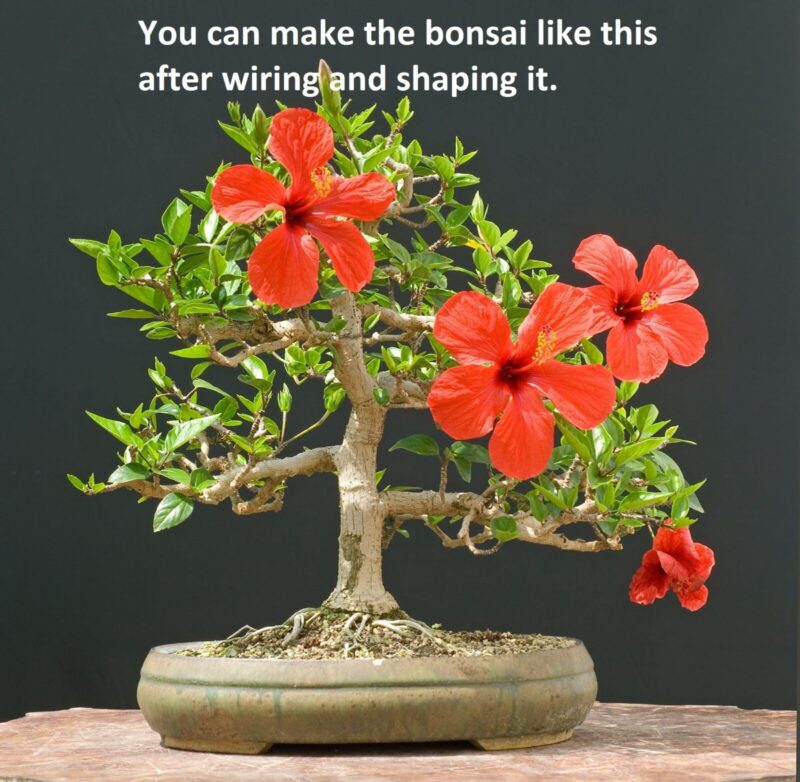
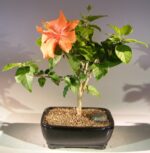
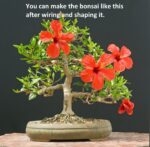
 Click on Icon to Join Bonsai Community on WhatsApp
Click on Icon to Join Bonsai Community on WhatsApp 
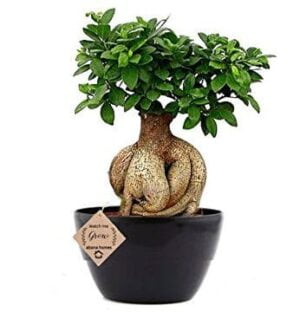
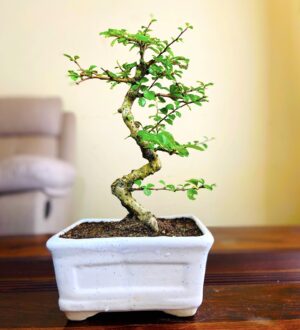
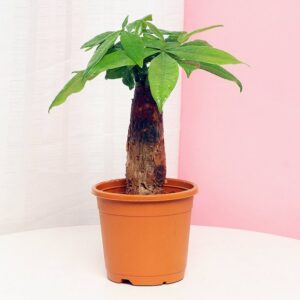
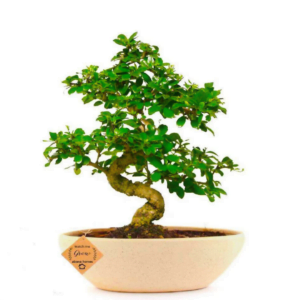
Received the hibiscus bonsai in a fairly good condition….a few yellowing leaves due to transit. However overall health of the tree seems to be good. Thank you.